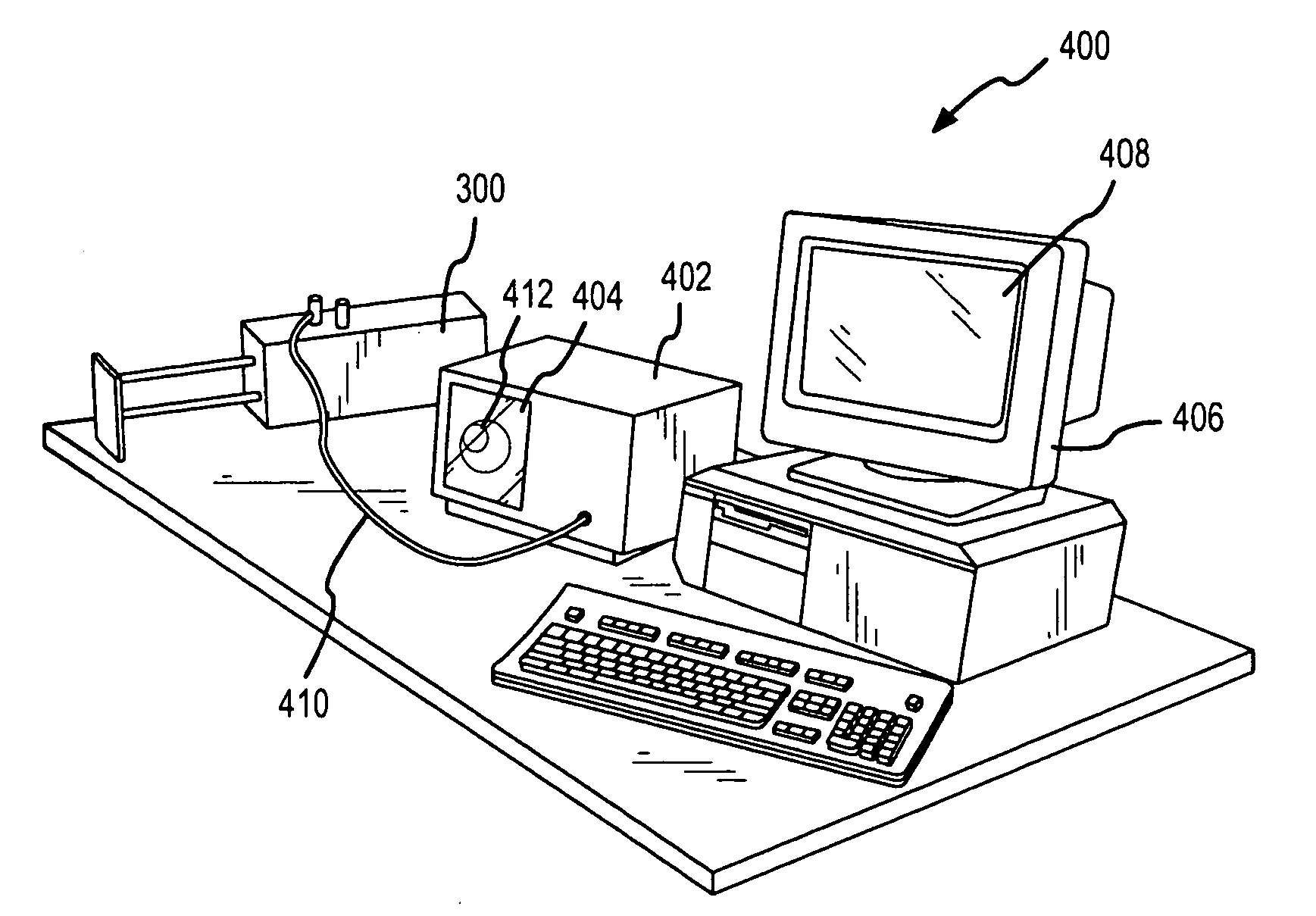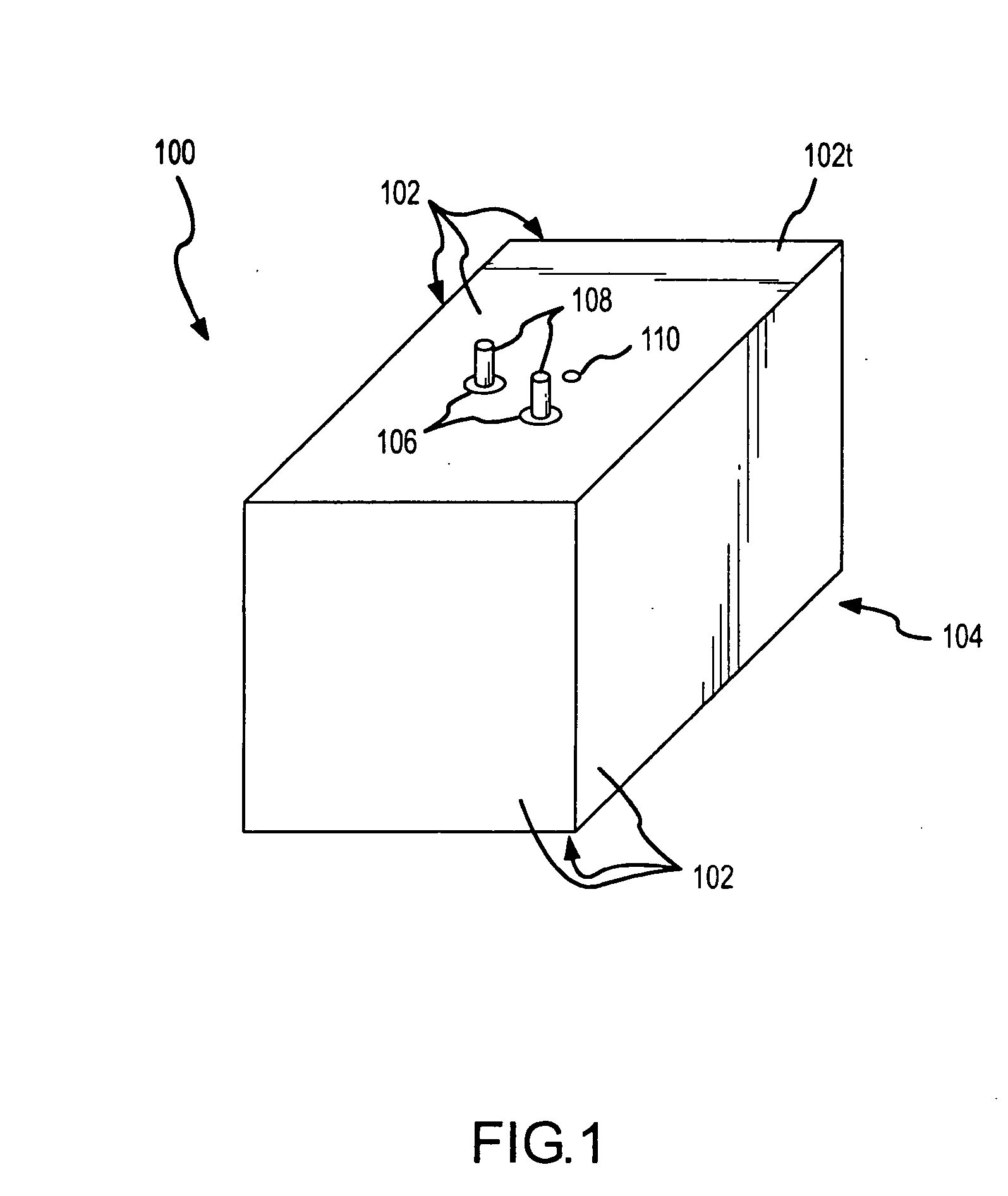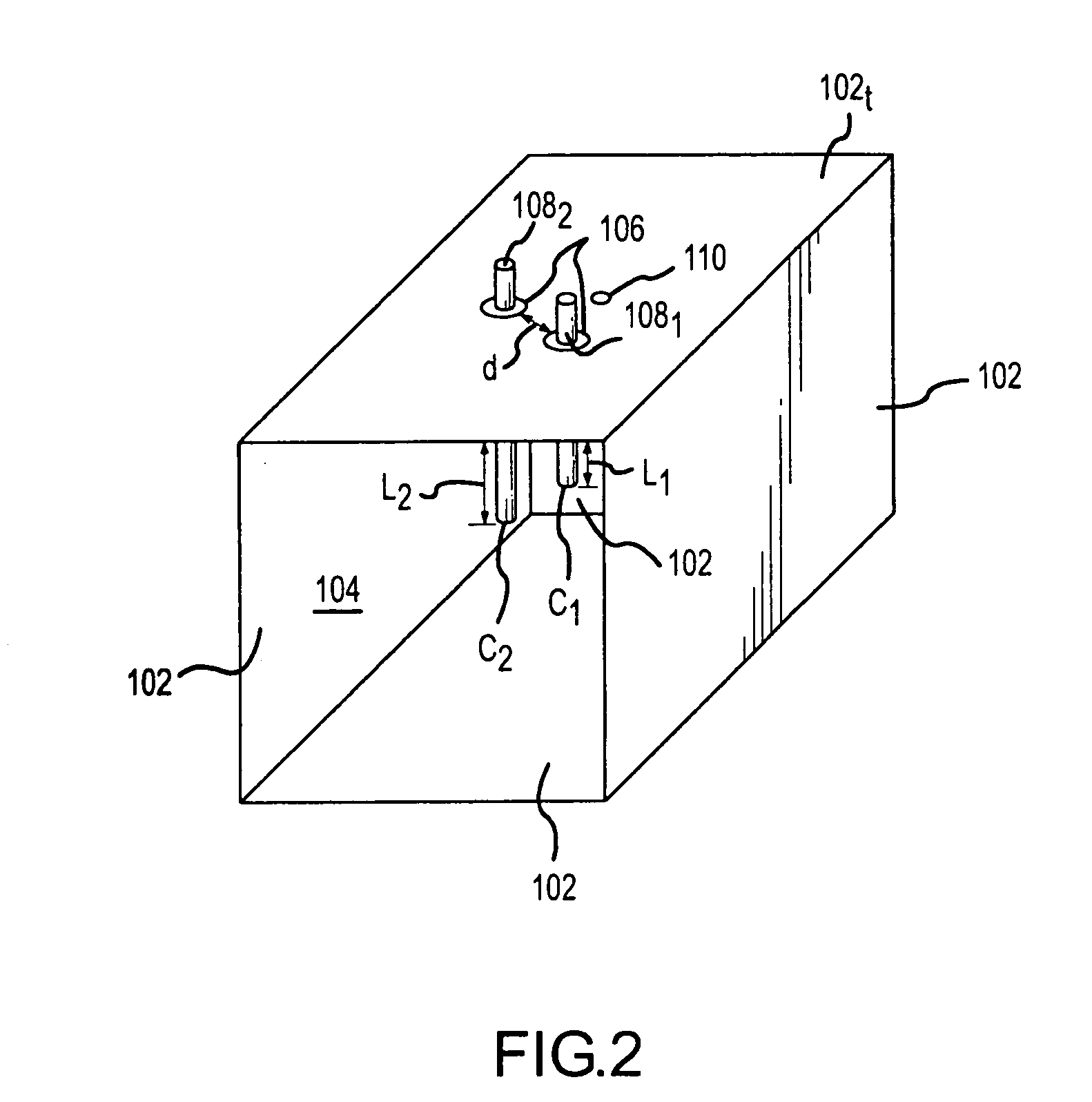Method and apparatus to control an antenna efficiency test device
- Summary
- Abstract
- Description
- Claims
- Application Information
AI Technical Summary
Benefits of technology
Problems solved by technology
Method used
Image
Examples
Embodiment Construction
[0024] This invention provides, among other things, a novel test cavity design for the Cavity Method of Efficiency. This novel test cavity enhances the scope of applicability of Cavity Method of Efficiency and improves the accuracy of the measurement. Further, the novel test cavity increases the bandwidth of the measurement range. This invention also proposes and demonstrates that it is possible to use the novel test cavity to carry out the measurement with different types of antennas across many frequency bands of interest. One particular and significant improvement of the novel test cavity of the present invention involves avoidance of the anti resonance and associated negative values of efficiency that result from attempting to take measurements in the anti resonance bandwidth. As will be described, this technical advantage is achieved by the novel test cavity of the present invention in part by minimizing the coupling between the test antenna and the measurement cavity.
[0025] T...
PUM
 Login to View More
Login to View More Abstract
Description
Claims
Application Information
 Login to View More
Login to View More - R&D
- Intellectual Property
- Life Sciences
- Materials
- Tech Scout
- Unparalleled Data Quality
- Higher Quality Content
- 60% Fewer Hallucinations
Browse by: Latest US Patents, China's latest patents, Technical Efficacy Thesaurus, Application Domain, Technology Topic, Popular Technical Reports.
© 2025 PatSnap. All rights reserved.Legal|Privacy policy|Modern Slavery Act Transparency Statement|Sitemap|About US| Contact US: help@patsnap.com



